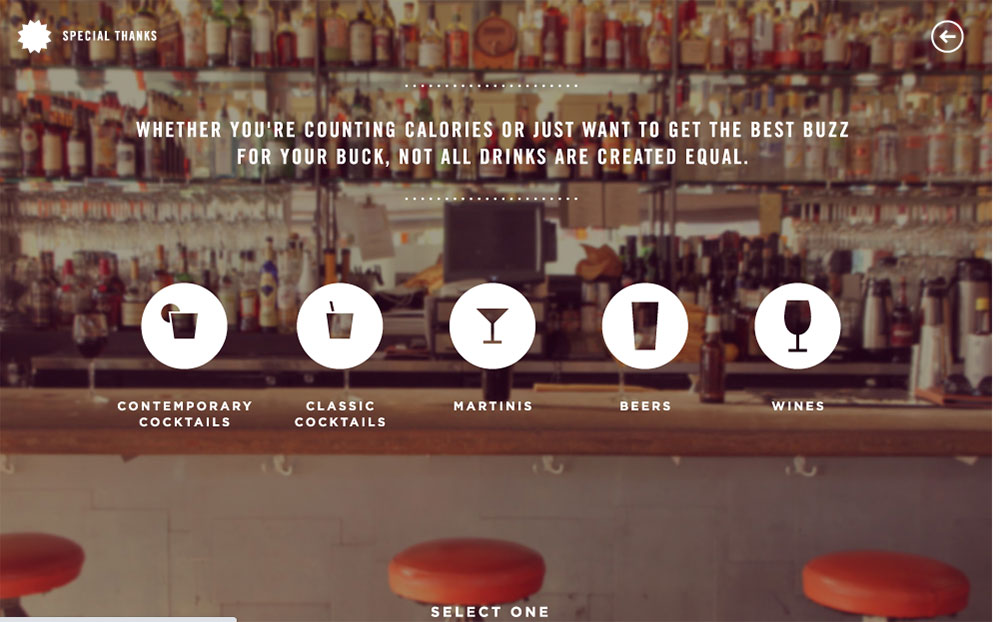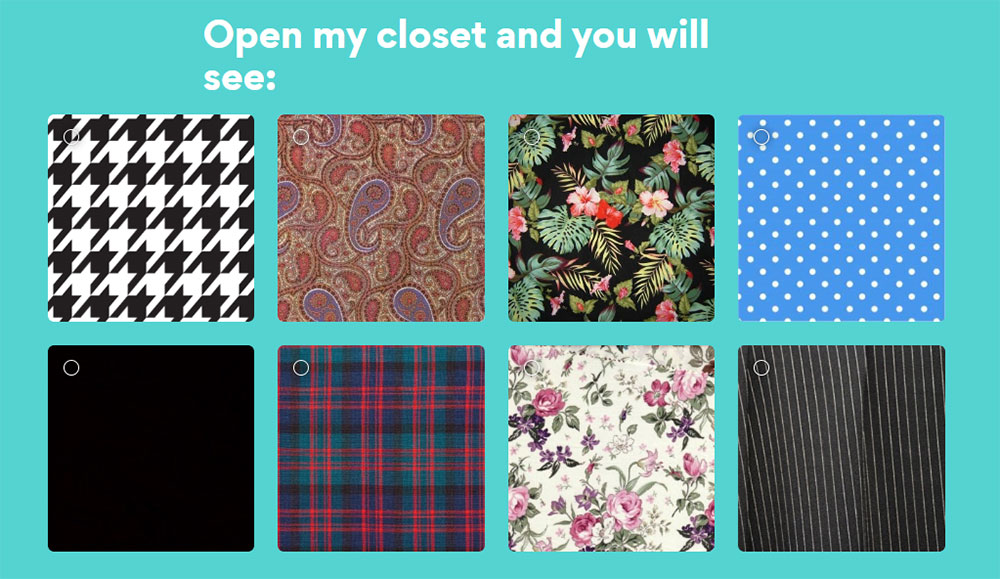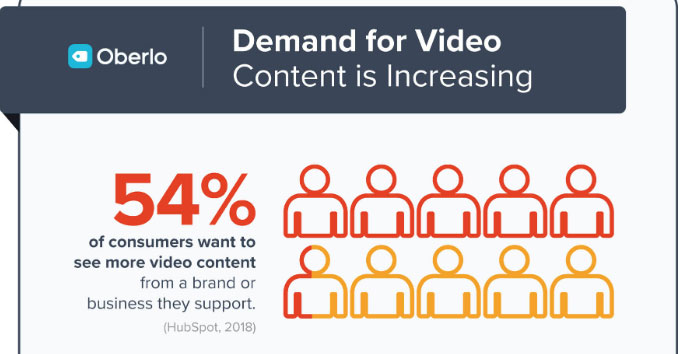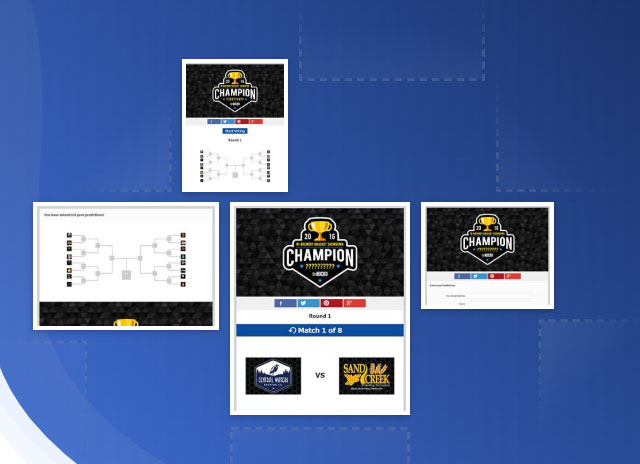The US economy is driven by small businesses. From small towns to urban cores, small businesses employ millions of people across the country.
However, running a small business is no easy task. As a business owner, you’re likely managing staff, running payroll, ordering products, and developing a marketing strategy. But, there are dozens of blogs and tools that promise to help make marketing easier — which often ends up being overwhelming.
So, why, exactly should you care about interactive marketing? Here’s what you need to know.
What is Interactive Marketing?
Interactive marketing creates back and forth communication between a brand and its audience. Most marketing content, including blogs like this one, create a one-way communication. A brand shares content, and their audience consumes that content.
In interactive content, the audience becomes a participant, not just a consumer of content. For example, a local restaurant might host a photo contest, with the top submission winning a free meal or gift basket.
Interactive content is often more affordable and effective than other marketing strategies — especially for small businesses struggling to stand out.
What are the Benefits of Interactive Marketing for Small Businesses?
Interactive marketing can be particularly successful for small businesses that want to build a strong rapport with their audience. Rather than talking at your audience, interactive content creates a conversation, which creates a real relationship.
How can interactive content benefit your business? Here are a few ways:
- Brand building: Interactive marketing campaigns engage audience members, making them far more likely to remember your brand. For example, are you more likely to remember an ad you saw scrolling Facebook or a fun quiz you took?
- Drive sales: A successful interactive marketing campaign builds brand awareness and converts audience members into dedicated customers.
- Lead generation: Lead generation helps small businesses attract and convert customers, but it can be incredibly challenging to manage successfully. Whether you are looking to gather email addresses, phone numbers, or get book consults, interactive content can make lead generation easier.
- Increase social media engagement: Organic social media engagement is at an all-time low. Most businesses have to pay to reach their audience on Facebook and Instagram. Interactive content is fun, which increases likes, comments, and shares — often without paid ads.
Types of Interactive Marketing
Interactive marketing is any type of content that directly engages your audience. This can be as simple as a multiple choice quiz or a more complex interactive game. Here are a few of the most common types of interactive content to help grow your small business.
Interactive Infographics
Interactive infographics present information in a visual format that can be manipulated by scrolling or clicking. This example, from Column Five Media, allows users to select their favorite cocktails and view calories, alcohol content, and ingredients for a variety of drinks.
Interactive infographics provide personalized content in an interactive, engaging format.
Quizzes
Quizzes are one of the first forms of interactive content. You’ve likely seen plenty of quizzes on Facebook, but might not have known how to use them to promote your brand. Zenni Optical uses a fun quiz to help users find their ideal glasses frames in their “You’ve Been Framed” quiz. Users are instructed to select a favorite decade, icon, fabric, and season, among others.
Upon completion of the quiz, Zenni gives a customized glasses suggestion based on the user’s style.
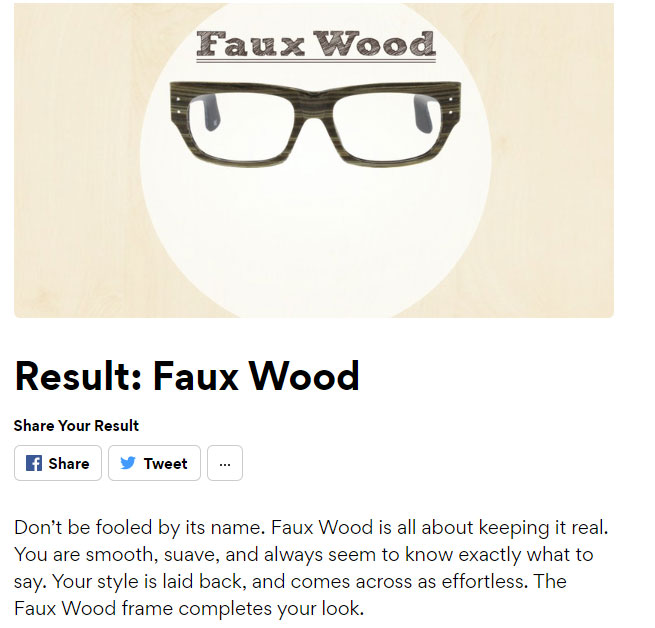
Quizzes can be used for product recommendations, like in the Zenni example above. Small brands can also use fun personality quizzes to help build brand awareness.
Interactive Videos
Videos are one of the most powerful marketing tools out there right now. In fact, 85% of all internet users in the US watch online video content every month. If you want to drive brand awareness and sales, video is crucial.
Interactive videos turn the power of video content up a notch by directly engaging your audience. You can use the “choose your own adventure” model, provide clickable buttons, or use a 360-degree view that allows the users to click and drag to interact with a space in real-time.
This video, titled The British Impact, explores different types of script and allows users to click to read profiles of people introduced in the video.

What’s most interesting is this is actually created by Jaguar, the car company, but focuses on the impact typography has on the things we see in everyday life.
Small businesses could use interactive video to showcase a new storefront, explore a new product, or introduce their staff.
Photo Contests
Photo contests are an ideal way to interact with your audience without a large upfront investment. Ask users to submit a photo and choose the winner by vote, which encourages entrants to share and promote their entry. For example, WarHeads recently ran a photo contest where audience members were asked to share a photo of their Warheads sour chewy cubes on Instagram for the chance to win $2500.
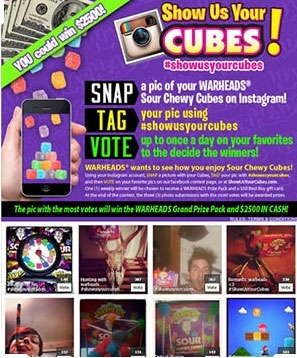
As a small brand, you might choose to offer a gift card, basket, or a smaller cash prize. Photo contests are generally most effective for building brand awareness.
Games
Gamification has been a popular marketing concept in recent years. Even large brands like Chipotle and Samsung use gamification to market. This strategy creates a sense of competition, which drives consumers to participate.
However, building a full game can be out of reach for most smaller businesses. Instead, consider using a tool to build and host a game for you.
WooBox, for example, offers a bracket game feature that allows you to customize predictive bracket games.
Participants fill out brackets, then score them, and WooBox displays a leaderboard to keep players engaged. Brackets can be used for fantasy sports, tracking karaoke winners, and anything else you can think of! WooBox takes care of all the customization, performance tracking, and voting features.
How to Launch an Interactive Marketing Campaign for Your Small Business
As a small business owner or manager, you don’t have time or the resources to waste on campaigns that ‘might’ work. So how do you ensure your interactive marketing campaign will actually drive results? Here’s a step-by-step guide to interactive marketing success.
Step 1: Set a goal
Without a specific goal, you’ll have no idea whether or not your campaign is successful. So your first order of business is to decide on a core marketing goal. For example, you might want to drive social media engagement, increase email list subscribers, or increase brand awareness.
Then, set a measurable marker for your goal such as “increase our email marketing list by 500 subscribers” or “increase brand mentions on Instagram by 25%.”
Step 2: Choose a type of content
Next, decide which type of interactive content makes the most sense for your business based on your budget, audience, and overall market. If you don’t have the resources to invest in a professional video, for example, an interactive quiz or photo contest might make more sense.
Step 3: Create a promotional strategy
No matter how much effort you put into developing interactive content, it won’t be effective without a promotional strategy. How will people find your content? While interactive content will likely be shared more widely than a blog post, you still need to promote the content to get traction.
The most effective promotional strategy will vary based on where your audience hangs out online, where you have the largest audience, and your campaign goals. For example, if you have a huge email list, a younger audience base, and want to build your Instagram presence, then you might use email marketing and paid Instagram ads to drive your interactive marketing campaign.
Don’t be afraid to test new promotional strategies if your content doesn’t take off right away. Paid ads, Instagram stories, and website popups can be effective ways to drive traffic to interactive content.
Step 4: Create your content
Once you have a goal, decide on the type of content, and have a promotional plan, it is time to build your content. This can be overwhelming, but luckily there are plenty of tools to help. Woobox, for example, makes it easy to build quizzes, photos contests, and brackets. They even help you select winners and handle terms and conditions.
For an interactive infographic, use a tool like Displayr. For interactive videos, with links or jumps, consider a tool like Camtasia, or hire a freelancer from a freelance job board like Fiverr.
Step 5: Measure your results
Last, but not least, track and measure your results to make sure your campaign helps you reach your goal. Decide on which metrics are most important and stay consistent with how you measure them. For example, if you want to increase Instagram engagement, then outline how you will measure engagement before your content launches.
Summary
- Set a goal
- Choose a type of content
- Create a promotional strategy
- Create your interactive content
- Measure your results
Ready to create an interactive quiz, bracket, or contest? Woobox support can help. Reach out to our dedicated support team from 8 am to 5 pm PST, Monday to Friday at 1-360-450-5200 and support@woobox.com.

